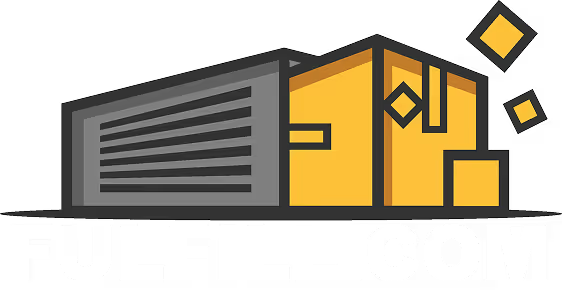Quick Jump
The Standard Carrier Alpha Code (SCAC) is a unique two-to-four-letter code used to identify transportation companies. It is assigned by the National Motor Freight Traffic Association, Inc., and is widely recognized in the freight industry and by regulatory agencies.
SCAC codes are integral to the efficient movement of freight. They are used in the Automated Manifest System (AMS) of the U.S. Customs and Border Protection (CBP), and in the freight payment and audit services of many shippers and receivers. Understanding SCAC codes and their role in logistics is crucial for anyone involved in the transportation industry.
History of SCAC Code
The SCAC system was established in the 1960s to facilitate computerization in the transportation industry. The system was developed and is maintained by the National Motor Freight Traffic Association (NMFTA). It was designed to provide a standardized method of identifying carriers in computer systems and shipping documents.
Over the years, the use of SCAC codes has expanded and they are now used in many other systems and documents related to transportation. Today, SCAC codes are essential for the efficient and accurate tracking, billing, and documentation of freight shipments.
Development and Maintenance by NMFTA
The NMFTA is responsible for assigning and maintaining SCAC codes. The organization ensures that each code is unique and does not conflict with any other code. The NMFTA also maintains a database of SCAC codes, which is updated annually.
Companies that wish to obtain a SCAC code must apply to the NMFTA. The application process involves submitting company information and paying a fee. Once a code is assigned, it is valid for a year and must be renewed annually.
Expansion of Use
While SCAC codes were initially used for computerization in the transportation industry, their use has expanded over the years. Today, they are used in many other systems and documents related to transportation, including freight billing, cargo tracking, and customs documentation.
For example, SCAC codes are used in the Automated Manifest System (AMS) of the U.S. Customs and Border Protection (CBP). The AMS is a multi-modular cargo inventory control and release notification system. It is designed to improve the collection, control, and dissemination of cargo information, and SCAC codes are integral to its operation.
Structure of SCAC Code
A SCAC code is a two-to-four-letter code that uniquely identifies a transportation company. The structure of the code is designed to be simple and easy to use, while also providing enough combinations to accommodate a large number of carriers.
The first letter of the SCAC code is usually the initial of the carrier's name. The remaining letters are chosen by the carrier. The code can be any combination of letters and numbers, but it must be unique and not conflict with any other code.
Two-to-Four-Letter Code
The two-to-four-letter structure of the SCAC code provides a large number of possible combinations, allowing for the unique identification of a large number of carriers. The code is designed to be simple and easy to use, making it suitable for use in a variety of systems and documents.
While the code can be any combination of letters and numbers, most carriers choose a code that is related to their name. This makes the code easier to remember and identify. For example, the SCAC code for FedEx Freight is "FDCC".
Uniqueness and Non-Conflict
Each SCAC code must be unique and not conflict with any other code. This ensures that each code uniquely identifies a single carrier, preventing confusion and errors in the tracking, billing, and documentation of freight shipments.
The NMFTA is responsible for ensuring the uniqueness and non-conflict of SCAC codes. The organization maintains a database of SCAC codes and checks each new application against the database to ensure that the proposed code is unique and does not conflict with any existing code.
Uses of SCAC Code
SCAC codes are used in a variety of systems and documents related to transportation. They are integral to the efficient and accurate tracking, billing, and documentation of freight shipments.
Some of the main uses of SCAC codes include freight billing, cargo tracking, customs documentation, and freight payment and audit services. They are also used in the Automated Manifest System (AMS) of the U.S. Customs and Border Protection (CBP).
Freight Billing
SCAC codes are used in freight billing to identify the carrier that is responsible for the shipment. The code is included on the bill of lading, which is a document issued by a carrier to acknowledge receipt of cargo for shipment. The SCAC code allows for the accurate and efficient processing of freight bills.
In addition to the bill of lading, SCAC codes are also used in other freight billing documents, such as freight invoices and freight payment and audit reports. The use of SCAC codes in these documents helps to ensure the accurate and efficient processing of freight payments.
Cargo Tracking
SCAC codes are used in cargo tracking systems to identify the carrier that is responsible for the shipment. The code is included in the tracking number, which is a unique identifier assigned to each shipment. The SCAC code allows for the accurate and efficient tracking of shipments.
In addition to cargo tracking systems, SCAC codes are also used in other systems related to cargo movement, such as cargo control and release notification systems. The use of SCAC codes in these systems helps to ensure the accurate and efficient control and dissemination of cargo information.
Customs Documentation
SCAC codes are used in customs documentation to identify the carrier that is responsible for the shipment. The code is included in the customs entry, which is a document that provides information about the shipment, such as the description and value of the goods, and the country of origin.
The use of SCAC codes in customs documentation helps to ensure the accurate and efficient processing of customs entries. It also helps to facilitate the collection, control, and dissemination of cargo information, which is crucial for customs enforcement and trade compliance.
Obtaining and Renewing SCAC Code
Companies that wish to obtain a SCAC code must apply to the NMFTA. The application process involves submitting company information and paying a fee. Once a code is assigned, it is valid for a year and must be renewed annually.
The renewal process involves submitting updated company information and paying a renewal fee. The NMFTA checks each renewal application against its database to ensure that the code remains unique and does not conflict with any other code.
Application Process
The application process for obtaining a SCAC code involves submitting company information and paying a fee. The company information includes the company's name, address, and contact information, as well as information about the company's operations and services.
The NMFTA reviews the application and checks the proposed code against its database to ensure that it is unique and does not conflict with any other code. If the application is approved, the NMFTA assigns the code and includes it in its database. The code is valid for a year and must be renewed annually.
Renewal Process
The renewal process for a SCAC code involves submitting updated company information and paying a renewal fee. The updated company information includes any changes to the company's name, address, and contact information, as well as any changes to the company's operations and services.
The NMFTA reviews the renewal application and checks the code against its database to ensure that it remains unique and does not conflict with any other code. If the renewal application is approved, the NMFTA renews the code and updates its database. The renewed code is valid for another year.
Conclusion
The SCAC code is a crucial tool in the logistics and transportation industry. It provides a standardized method of identifying carriers in computer systems and shipping documents, facilitating the efficient and accurate tracking, billing, and documentation of freight shipments.
Understanding SCAC codes and their role in logistics is crucial for anyone involved in the transportation industry. Whether you are a carrier, a shipper, or a receiver, being familiar with SCAC codes can help you to navigate the complex world of freight transportation more effectively.
Now that you understand the importance of SCAC codes in the logistics landscape, it's time to ensure your e-commerce business is paired with the best 3PL provider to handle your shipping and fulfillment needs with precision. Discover Your Ideal Logistics Partner with Fulfill, and take the first step towards optimizing your supply chain. Our platform is designed to connect you with top-tier logistics partners, making it easier than ever to enhance your operations and customer satisfaction. Don't let logistics complexities slow you down—let Fulfill help you find the perfect 3PL match today.










